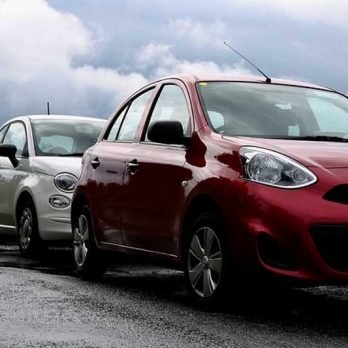Table of Contents
Getting a car is often seen as a rite of passage; the independence that having a car gives is unparalleled. You can finally go wherever you want, whenever you want. If you want to mark the occasion more, or you simply want to make your car stand out more, you might have thought about getting private reg plates. Obviously, number plates are unique to the vehicle anyway, but unless you get private plates, they won’t have any real significance to you. But when you design a custom car license plate frame, you can add a distinctive element that other cars won’t have. Before you get private plates, there are a few things you should know, so let’s get into it.
Types of Private Plates
There are a few different styles of registration plates to choose from in the UK, and your personalised plates can fall into any one of the categories depending on your preference. The current style, which was implemented around 2001, is made up of seven characters. First, there are two letters, then two numbers, followed by three more letters. The two numbers are used to age the car; for example, a number plate with 12 on it dates the car back to 2012.
There is also the prefix style. This was predominantly used on vehicles between 1983 and 2001. Instead of numbers indicating the age of the car, the letter at the start of the plate is used instead. Prefix plates start with a letter. Then they can have between one and three numbers before being followed by a final three letters.
The suffix style of plates is even older, being used on vehicles manufactured between 1963 and 1983. The letter used to indicate the age of the car goes at the end instead of the start of the plate. Their format tends to be as follows: three letters, up to three numbers and a final letter. Any plates issued before 1963 had a similar set format. They had up to three letters followed by up to three numbers, or had up to three numbers followed by three numbers.
With that said, the formats did not have an age identifying character. There is nothing to denote the age of the car. They are often more expensive because they can be incredibly minimal.
The Expense
There are several factors that will affect the price of the reg plates that you are looking at. Obviously, the basic principles of supply and demand also apply. The current style of number plate personalised with your desired characters tends to be one of the cheaper options because they are easier to find the cost tends to be pretty fixed.
Older, rarer plates are going to cost more, and as a general rule, plates with fewer characters also tend to be more expensive. Most of the time, buying immediately will also be cheaper as opposed to going to an auction where the price is often driven up.
Registration Plate Rules
In addition to subscribing to one of the categories or formats mentioned above, the reg plates also have to adhere to a couple of rules to ensure that they adhere to the necessary laws and regulations. First, you cannot change the font style or size, and they have to be the right colours. You cannot adjust the reg plates using bolts or tape to change the message. Finally, the reg plate also cannot make the car appear younger than it is.
Are Personalised Number Plates Transferable?

In short, yes. Once you have purchased a private reg plate, you can use it on any subsequent car that you purchase. However, it is important to point out that this doesn’t mean that you can simply pop them onto your new car. The plates need to be registered properly every time that they are put onto a new vehicle. Registering the plates is a pretty simple process.
When purchasing personalised plates, you should get a confirmation of the purchase via email, and you might either get an electronic, paper copy or both of your V750, which is your certificate of entitlement. The details on the certificate are then used to register the plates, which can be done online or via a form that is posted off. You then have to wait for a confirmation from the DVLA that they have received the form before you can actually swap the plates over. They will give you a V5C registration certificate which needs to be kept because it will then be needed for every subsequent transfer.
The car that you are taking the plates off of has to still be able to move under its own power, and it also has to have been taxed or SORN as appropriate for the last five years. As long as the car fulfils those criteria, you can transfer the number plates. When transferring plates, it is important that you let your car insurance provider know because it can affect your policy; after all, the number plate is often used to tell the provider key information about the vehicle.
If you already have a vehicle that you want to swap the plates over to, then you will need to take the required steps. Obviously, if you are getting rid of your old vehicle, this needs to be dealt with before you either sell or scrap the vehicle; otherwise, you lose any right to the number plate. However, you also need to keep hold of the old physical number plate or the old acrylic number plate if applicable. This is because the DVLA automatically assign an age-related plate which is usually the plate the vehicle previously had. This means you won’t have, and won’t need to have, any paperwork to keep hold of.
Where Can Personalised Reg Plates be Bought From?
Personalised number plates can be found from a number of different sources. You can go directly to the DVLA for them, but the auctions are sporadic, and the price can quickly be driven up. There are also a number of third-party retailers who specialise in procuring and selling private plates like Regtransfers, giving you the chance to buy private plates. There is a search feature where you can type in the characters you are looking for, and they will give you the options that they have available, or they can get to work on procuring the one you want if you have a specific plate combination in mind.
Does the car need to be Owned Outright?

If you own the car outright, then the process is a little more straightforward and simpler. However, you can still put private plates on your car even if you have it on finance or if it is leased, although the process is a little longer. This is because, technically, the finance provider owns your vehicle until it has been paid off; this means that you need to have their permission. Submit a request to them in writing and wait for their response. If they don’t agree, then you cannot change the licence plate, but they don’t tend to deny requests.
Once they have agreed, you still need to fill out the form but name the finance provider as the nominee instead of yourself. This can occasionally incur an additional admin and processing fee. Again, if you give the car back or sell it on, you will need to switch the plates back and notify them of this too.
The Takeaway
Personalised number plates are incredibly popular, make great gifts, and can help make your car stand out more – even if it is just an old runabout. There are so many choices out there you truly can have a totally unique number plate, whether you want something funny that makes you laugh or something that carries a special meaning for you.










